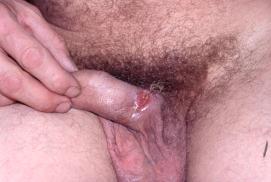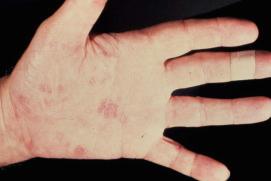Physical Address
304 North Cardinal St.
Dorchester Center, MA 02124
Syphilis results from infection with the spirochete Treponema pallidum . Transmission of syphilis occurs most often through sexual contact. Mother-to-infant transmission also occurs, and infection via blood transfusion is possible. Although T. pallidum induces strong humoral and cell-mediated immune responses, untreated infections can persist for decades.
Syphilis is transmitted only through human-to-human contact; there is no animal or environmental reservoir. The World Health Organization (WHO) estimated that 10.6 million new cases of syphilis occurred among adults worldwide in 2008. Although the infection has a global distribution, 90% of syphilis cases occur in developing countries, reflecting the lack of access to treatment and prevention programs for sexually transmitted infections in resource-poor settings.
In the United States, rates of syphilis declined rapidly in the late 1940s after the introduction of penicillin therapy and accompanying public health control programs. However, a resurgence occurred in the 1980s, coincident with an epidemic of crack-cocaine use, at which time most cases occurred in heterosexuals. Medical and public health efforts substantially reduced rates of syphilis by the mid-1990s, but a second resurgence, which is ongoing, began in the late 1990s to early 2000s. In North America and Europe today, syphilis is concentrated in populations of men who have sex with men (MSM), particularly MSM infected with human immunodeficiency virus (HIV). Among HIV-negative MSM, the diagnosis of early syphilis portends a high risk for subsequent HIV infection, and MSM with syphilis represent a high priority subgroup for HIV pre-exposure prophylaxis and other HIV prevention efforts. A substantial increase in syphilis occurred in Russia, other Eastern European countries, and China beginning in the early 1990s. The majority of syphilis cases globally occur in sub-Saharan Africa and South and Southeast Asia. Rates of congenital infection and stillbirth from syphilis remain unacceptably high in many settings in these areas.
Endemic, nonvenereal treponemal infections, such as yaws and pinta, remain a source of disability in affected areas, primarily tropical regions in Africa, Latin America, and Southeast Asia. Penicillin mass treatment programs in the 1950s and 1960s significantly decreased the worldwide prevalence of these infections, but eradication was not achieved. Impoverished, remote populations are disproportionately affected.
Numerous monographs have been written describing the protean manifestations of syphilis, and excellent, updated reviews are available in the major medical and infectious disease texts. This discussion will be limited to specific aspects of syphilis relevant to understanding and treating sexually transmitted infections among travelers and persons living in the developing world.
The classic chancre of primary syphilis is a painless ulcer with an indurated margin and a clean base called a “chancre” that develops at the site of inoculation an average of 2-3 weeks post-infection ( Fig. 43.1 ). Solitary lesions are typical, but multiple lesions can occur. The patient may not notice chancres, particularly in difficult-to-visualize areas such as the perianal area, labia, cervix, anus, rectum, and mouth. Secondary bacterial infection of these ulcers is rare. Unilateral or bilateral painless, nonsuppurative inguinal adenopathy follows appearance of the chancre by several days in 70-80% of cases. Spontaneous resolution of the chancre and adenopathy usually occurs within 6 weeks. Unfortunately, variation in the presentation of syphilitic ulcers makes clinical examination alone unreliable for the diagnosis of primary syphilis. Even clinicians experienced in diagnosis and management of sexually transmitted infections frequently misdiagnose the etiology of genital ulcers based on clinical examination. Use of laboratory diagnostics, when available, is crucial for appropriate etiologic diagnosis and treatment. In resource-poor settings, syndromic management of genital ulcer disease, including treatment for chancroid and syphilis, is commonly practiced.

Secondary syphilis is a systemic illness resulting from hematogenous dissemination of treponemes. The symptoms of secondary syphilis usually appear about 4-10 weeks after the appearance of the primary chancre. The manifestations of primary and secondary syphilis overlap in about 15% of cases. Clinical manifestations of secondary syphilis are extremely varied. The classic finding is a lacy, erythematous, maculopapular rash covering the trunk and abdomen. Palmar or plantar lesions, if present, are particularly suggestive of the diagnosis ( Fig. 43.2 ). Cutaneous manifestations also include nodular, pustular, or follicular rashes, typically on the palms and soles but also more diffuse on the trunk; condylomata lata (nontender, sometimes moist, wart-like papules in the genital region), mucous patches in the mouth; and, less commonly, alopecia. The skin eruption is usually nonpruritic, but some patients complain of itching and present with excoriated lesions. Persons in the secondary stage of syphilis commonly have other manifestations of a systemic infection, including fever, generalized fatigue, and lymphadenopathy. Secondary syphilis must be considered in the differential diagnosis of any generalized skin eruption, particularly in MSM and pregnant women. The differential diagnosis for the rash of secondary syphilis includes viral exanthema, drug eruption, and primary HIV infection, among other etiologies. If untreated, approximately 25% of patients with secondary syphilis will have a relapse of active secondary syphilis, typically within 1 year.

Become a Clinical Tree membership for Full access and enjoy Unlimited articles
If you are a member. Log in here